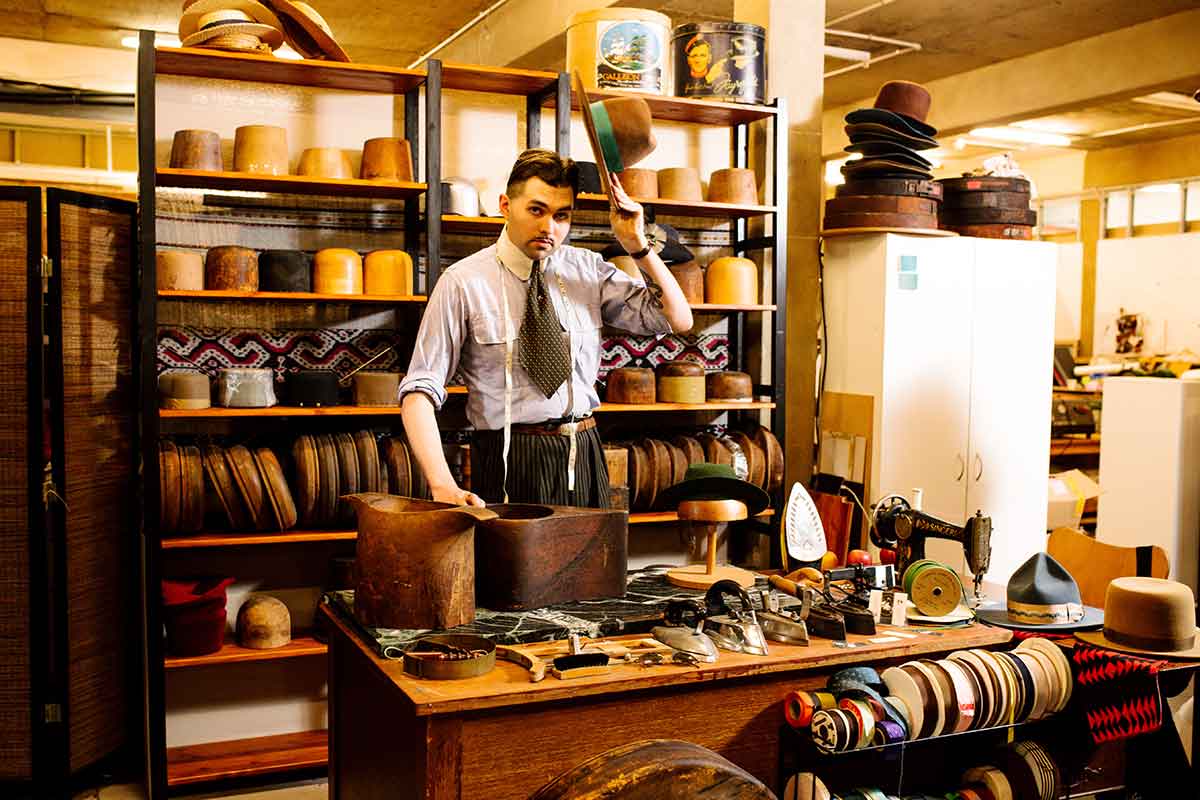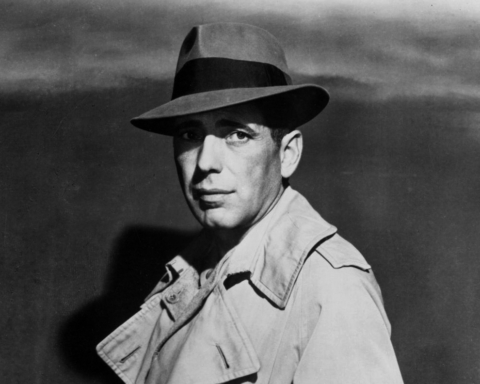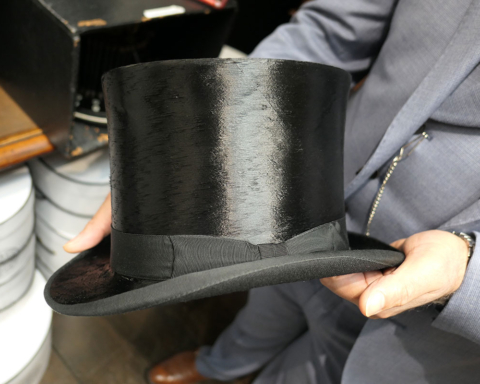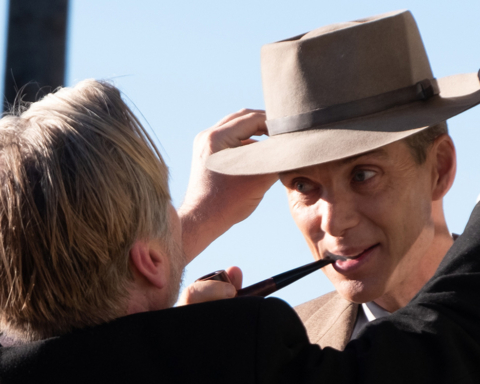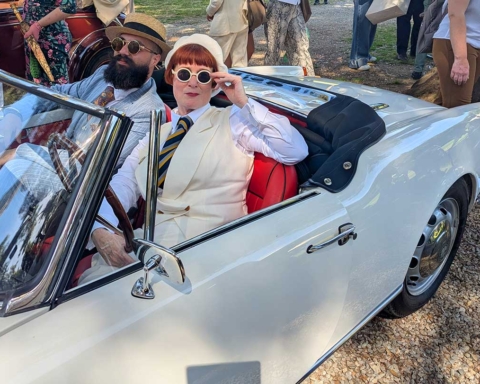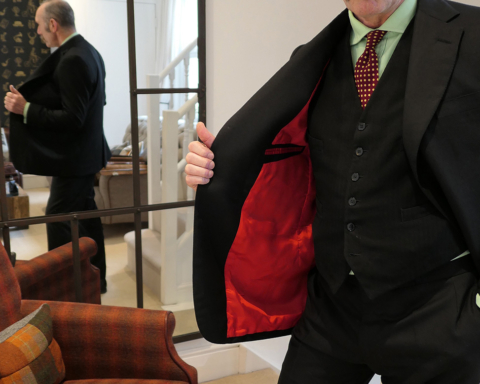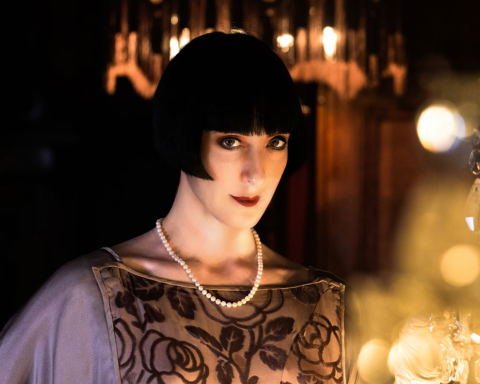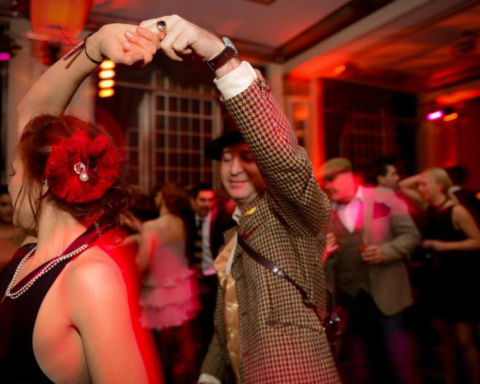Gustav Temple spoke to Australian hat maker Blake “Blakesby” Canham-Bennett, who has expanded the colour and shape of men’s headwear, while holding on to classic styles and manufacturing methods.

You seem to have broken the mould when it comes to men’s hat styles, while adhering to traditional blocks and techniques. Was this what you set out to do originally?
Thanks! I don’t know that this was really my initial intent. I just wanted to make very traditional and vintage inspired hats, and I definitely wanted to create styles I couldn’t easily find. I started with a certified millinery course, which at the time I didn’t know was any different to traditional men’s hat making. I soon after shifted my focus away from the millinery approach, in favour of more traditional hatter techniques, most of which are traditional methods unchanged for easily a century.
Most hat makers in Britain stick to the tried and trusted trilbies, bowlers and Fedoras in browns, greens and blacks. Did you immediately set out to shake those traditions up?
From the start, a big drive for me was to make hats I wanted but couldn’t seem to find, and that particularly focused on colours! One of my early makes was a velour finish green felt, high-crown homburg, trimmed with brown petersham ribbon around the crown and brim edge. At the time I couldn’t find anything like this, so I made it myself. In my early making career, I chose contrasting colours, but I quickly found that not only did such styles lack versatility, but it also felt like this may have been alienating to some people. I’ve since learned to be bold in less jarring, more harmonious ways; sometimes bold in design rather than overtly relying on colour to strike interest.
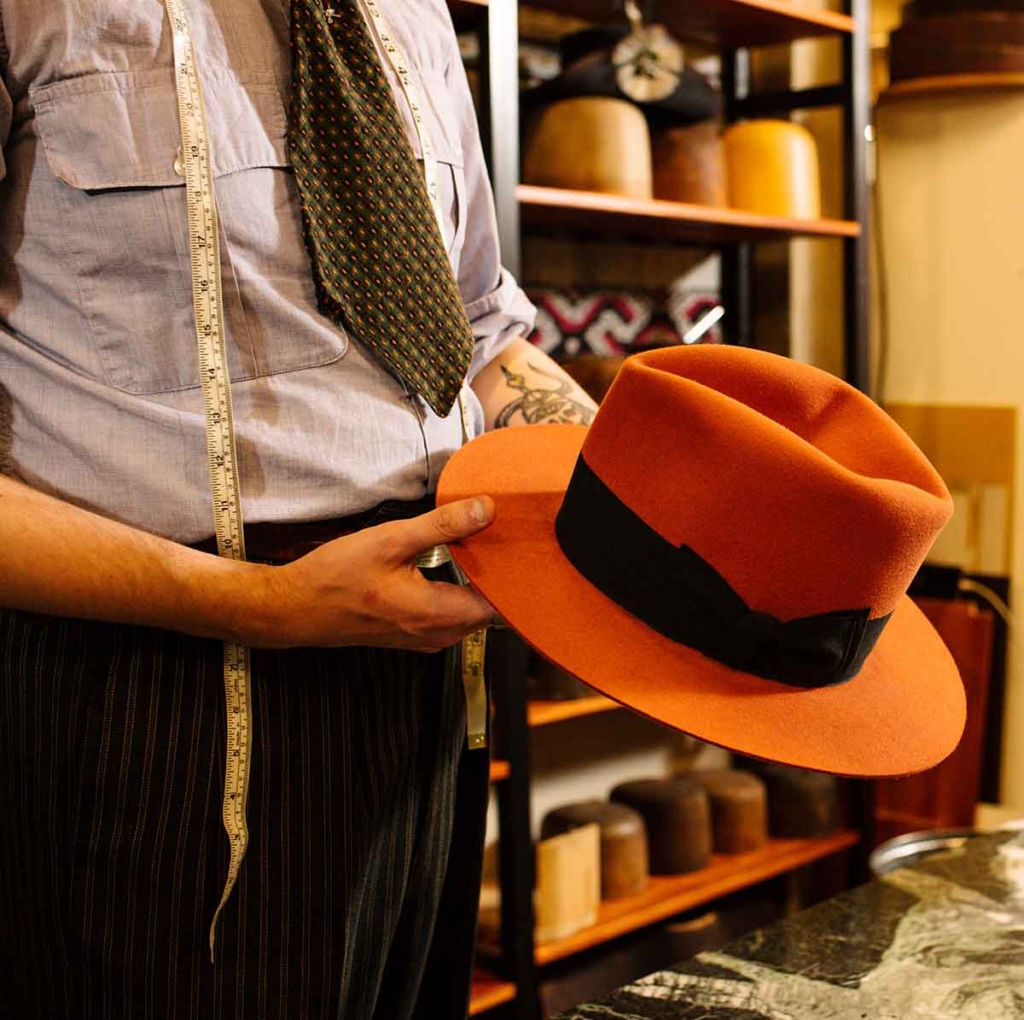
In Britain, hat wearing has seen a resurgence, which The Chap is very pleased about. What is the general state of hat wearing among men in Australia?
I’d certainly like to think so, but I don’t think it’s ‘back’ in as big a way as it may be in North America, UK, and Europe. I’d imagine it’s much like any niche interest, and the rest of the world has more of a cultural background to support said niche – for example more Americans find an interest in hats because those western lids are embedded within their history, or how the traditional English chap would surely be amiss without a bowler atop his monocle’d noggin’. Australia doesn’t feel like it really has that history or relationship with hats. But among those of us down here who look abroad for inspiration, or within some counter-cultures, I’d say they’re a bit more common than they may have been decades earlier.
Is there a larger market abroad for your creations?
As I was first getting started, many of my early sales went overseas, but it’s certainly balanced out more recently to 50/50 domestic/international, and I’ve been getting more interest from the UK lately too! I’m quite fond of the ‘adventure pulp’ aesthetic, so I’m pleased to have had the pleasure of making hats for a few modern-day explorers, including Egyptologist John Darnell and documentary filmmaker Trevor Wallace (who took his hat on an expedition to Siberia to dig up frozen mummies). Chap coverman Dandy Wellington is one of my favourite customers, and he’s always down for something more colourful.
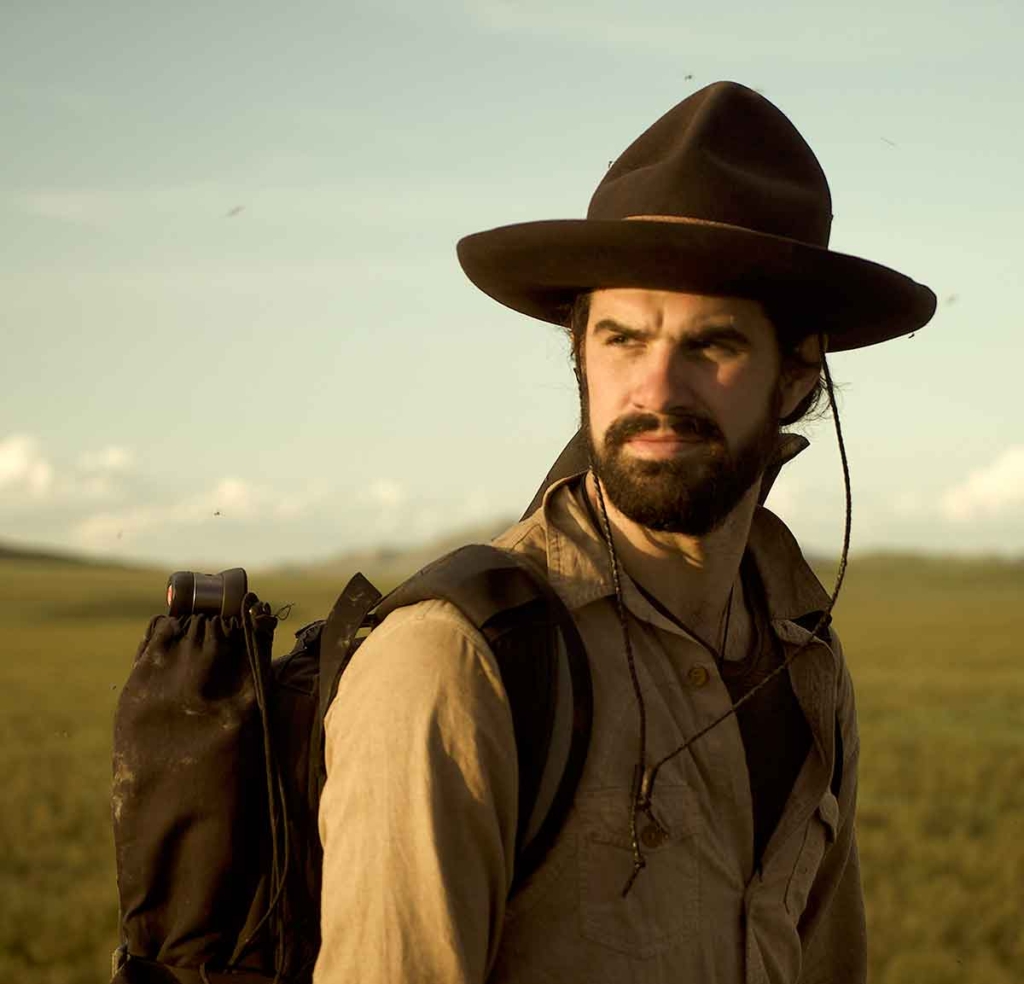
Are you sticking to felt hats or do you have plans to move into Panama hats?
I have made a few Panamas, but not for quite some time. I find felt a lot easier to work with than straw, which can often seem to have much less ease and give than that of more pliable felts. I’ve more recently made the occasional duplex, which is a hat made with a contrasting crown and brim body, with the crown typically straw and the brim of felt. It’s a design which has actually been around since at least the 1910s, and gives off quite a sporty appearance! I also have a passion for lightweight or summerweight felts. I absolutely think felt can be practical all year round. I also don’t line my hats (I simply am not a fan of crown liners), and I find this is justified by pushing the option of perforation/ventilation holes punched into the crown to allow the head to ‘breathe’, which I think is a really nice detail lacking from most modern factory-made pieces.
In Britain, Henley Regatta and Royal Ascot are two annual events where hat wearing is ubiquitous. Are there any such events in Australia?
We have a few, but our main one is the Melbourne Cup – “The race that stops a nation”. I believe we celebrate Royal Ascot here too. I’ve always shrugged these events off as being more for the milliners, and that broadly men don’t really wear hats to these things down here. Although I did make a teal fedora with a contrast burgundy ribbon for a customer who debuted it at one of the Melbourne races – he got pretty close to the finals of the ‘best dressed men’ fashions-in-the-field competition, but I feels it’s particularly telling that most of the finalists weren’t even wearing hats!
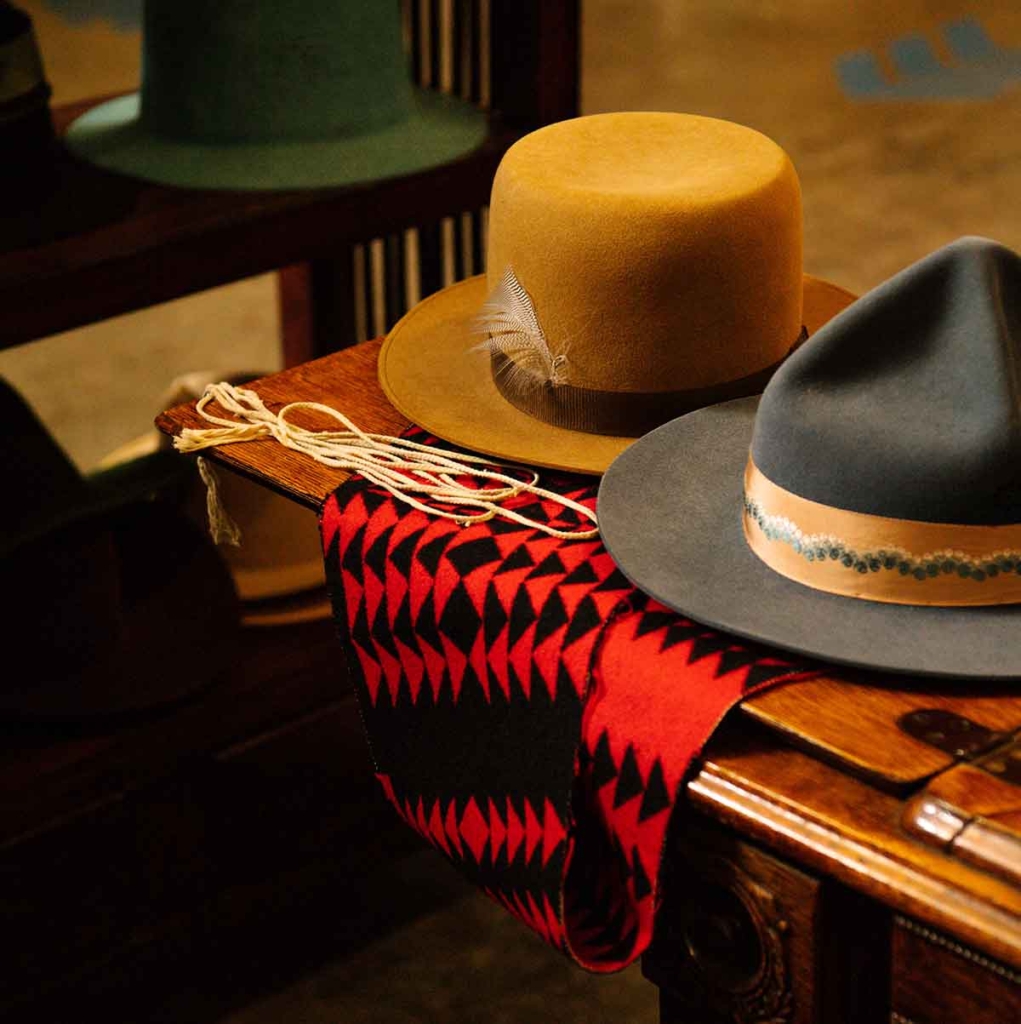
You have thankfully revived the Boss of the Plains hat, a particular favourite of mine. How much demand is there for these among your customers?
Classic western and heritage Americana designs are always quite favourable, and in many ways timeless pieces which can be worn just as well with more casual or street style, as they can be with more tailored and traditional looks. Often wider seems better, and I often dream of having easier access to felt hat bodies which are large enough that I never have to consider “will I have enough for a good width brim here…?” I think the average person might find the larger dimensions a little alienating, or won’t think it suits them simply because they’re not comfortable with the shape (often because many people have become too used to cheap mass-produced department store trilbies, with stingy brims and low crowns). However, creatives, and especially musicians, very much gravitate towards these styles.
Where did you source all the necessary equipment to make your hats?
I’m incredibly fortunate to be less than a half-hour drive away from one of the world’s best block makers, Darryll Osborne of Hat Blocks Australia, so much of my standardised range and many of my specialised handtools have come from his workshop, and any repair or maintenance work is trusted to him. I’ve also sourced easily two-thirds of my collection through lots imported from the United States, including many which once belonged to a hatter who made hats for Warner Bros. in the early 20th century. It’s definitely been a massive yet slow investment.
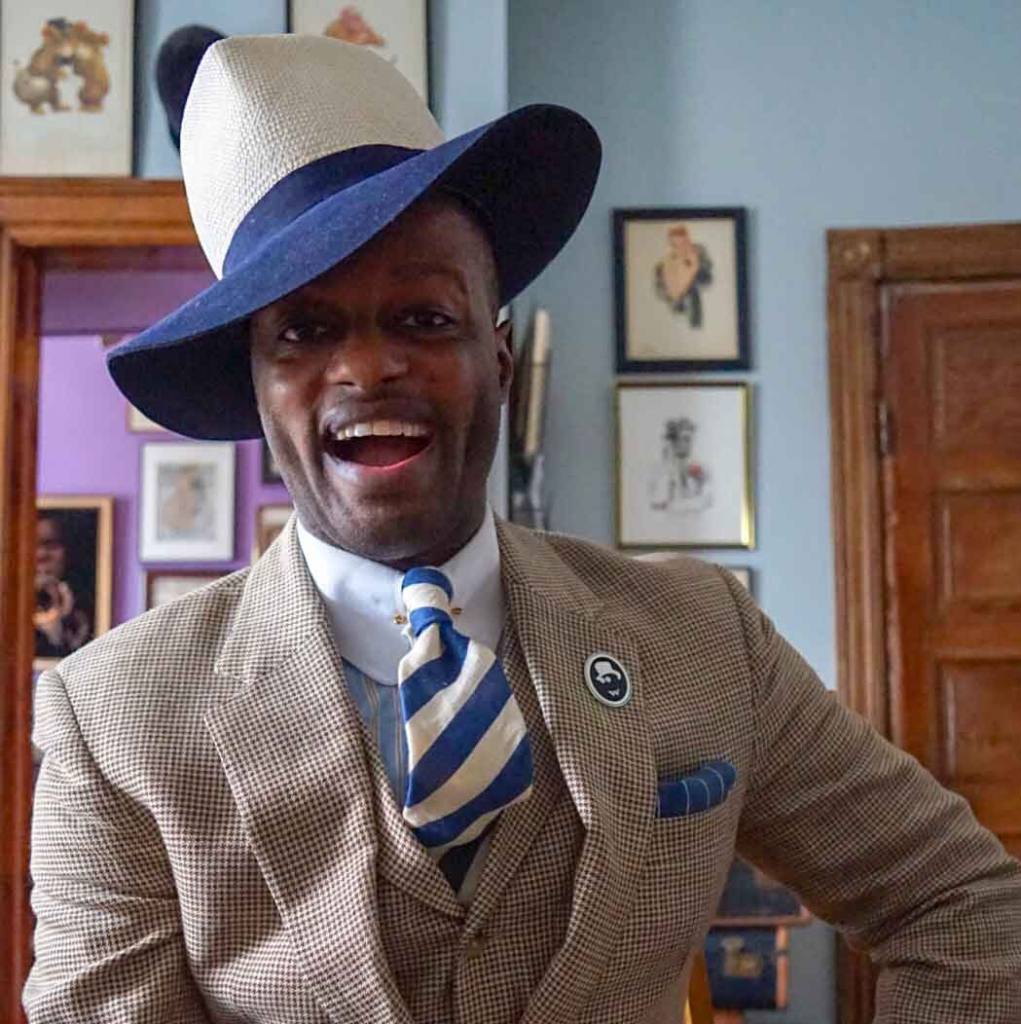
You have made bowler (or ‘coke’ hats). Any plans to make a top hat?
Indeed, I’ve made a few in my time. Not many though, as few have requested it. I love a good bowler/derby/coke hat, but I prefer the vintage stiff and structured, yet thin and almost card-like felt of hundred-year-old-plus bowlers. Preferably unlined with a ventilated crown, and a sharp D’Orsay brim curl (that’s the kind of curl where the brim folds inwards at a 40° angle, rather than more contemporary curls which have more of a curved angle and less of a sharp corner). I can, and have, made bowlers if you’re not quite as specific and picky as me! As for toppers, unfortunately they demand very specific crown blocks to make, and it would be an expensive investment for an unclear demand. I do have a single topper block which is only one size, very much a Lincoln style ‘stovepipe’ topper, and I’ve made one hat with it in a sandy coloured beaver felt with a slightly fuzzy finish, which serves as a bit of a flashy showpiece. I’d love to make more though, one day…

